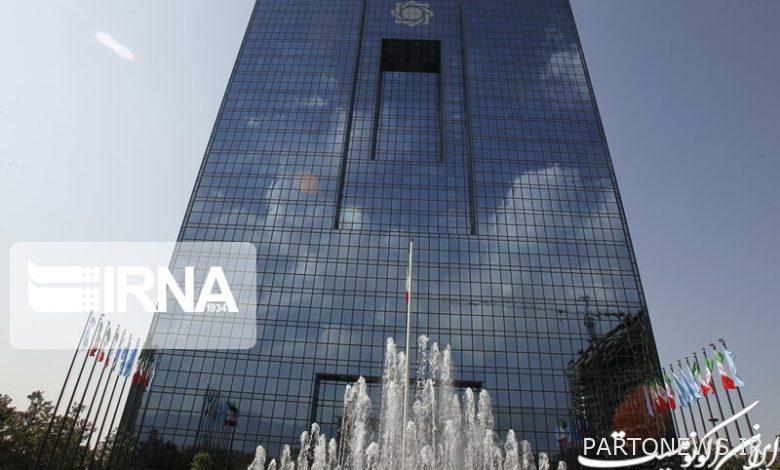Denying the government’s indirect borrowings from the sources of the banking system

According to Iran Economist“Jehan Sanat” newspaper on April 16, in a report entitled “Inflationary Alarms”, citing the latest data published by the Central Bank, has stated: “These data depict the developments of the money and banking market until the end of January of last year. It shows that the government crossed the red line of borrowing from the banking system. The increase in these demands shows the increased need for banks’ liquidity as a result of the government’s indirect borrowings from the banking system’s resources. Also, in the continuation of this report, the statistics of liquidity and the ratio of money to liquidity are mentioned and it is referred to as a new alarm of increasing inflation in the economy.
Reacting to this newspaper’s report, the central bank wrote: Regarding the increase in the debt of the banks to the central bank in recent months, it is necessary to explain that the major part of the overdrafts of banks and credit institutions is affected by factors such as balance sheet problems and their corporate governance, which is also in short-term and not created within the last one year, and it was mainly focused on the past behavior of banks and the accumulation of various imbalances in their balance sheets.
In addition, the performance of banks and credit institutions in keeping at least three percent of their deposits in the form of Islamic financial bonds at the end of February 1401 shows that there are a total of 1211.1 thousand billion Rials of Islamic financial bonds in the banks’ portfolios, which is compared to the balance The deposits of the non-governmental sector with banks and credit institutions (59959.6 thousand billion rials) are equivalent to 2%, which is lower than the regulatory limit.
Therefore, it is clear that the phrase “the government crossed the red line of borrowing from the banking system and the increase in the debt of the banks to the central bank shows the indirect borrowings of the government from the banking system’s resources” has no basis and is completely against the financial performance and behavior of the government in 1401 .
Regarding the evolution of money growth and its share of liquidity, it is necessary to explain, in recent months, a set of various factors (mainly affected by the publication of negative news) led to the emergence of uncertainty and the formation of negative expectations regarding the evolution of the foreign exchange market, and as a result, the increase The exchange rate of the market became informal and inflationary expectations intensified.
According to the existing conditions, the government and the central bank, in order to manage inflationary expectations, control inflation, reduce liquidity and generally stabilize the economy, a set of measures such as modifying interest rates with the aim of controlling inflation (approved by the Money and Credit Council in the 22nd meeting December 1401) and its implementation from February 10, 1401, increasing the ratio of legal deposits at the level of the banking network by half a percentage point (paragraph “3” of the 49th minutes of the 3rd January 1401 meeting of the central bank’s executive board) and dealing seriously with delinquent banks and Nasalam, supply of currency in exchanges and banks, supply of coins in the commodity exchange, setting up of a currency and gold exchange center with the aim of creating price authority, increasing the volume of official transactions and ease of access for applicants to the currency and gold market and providing the currency required for the import of basic goods in The Nima system has followed the adaptation of the country’s foreign exchange and trade map in order to manage the flow of foreign exchange resources and expenses, etc.
It is expected that with the recent policy actions of the Central Bank and also positive developments in the country’s foreign policy, stability in the currency market will increase in the coming months and inflation expectations and liquidity will decrease to their historical trends.
Regarding the performance of the government and the central bank in liquidity control, it is necessary to explain, the issue of controlling the growth of liquidity and inflation as one of the most important economic priorities of the government and the central bank has always been considered. Investigating the growth of liquidity in the last months of 1401 has indicated the continuation of the decreasing trend of this variable as in the previous months, so that the growth rate of liquidity decreased from 39.7% at the end of February 1400 during a downward trend to 32.0% at the end of February 1401. Is.
Also, according to the latest available statistics, liquidity shows a growth of 28.2 and 32.6% in the middle of March 1401 (week ending March 18, 1401) compared to the end of March and the same week of 1400, respectively, and therefore it is expected that The monetary program set to control liquidity growth for the year 1401 will be realized and the liquidity growth will reach about 30%. Therefore, it can be seen that after three years (the growth of liquidity in the years 1398, 1399 and 1400 is equivalent to 31.3, 40 6 and 39.0 percent) the central bank with the cooperation of the government in 1401 was able to put the growth of liquidity, which is the most important variable in controlling inflation, on the way to reach the long-term average of this variable. It should be noted that this has been achieved in a situation where the economy of the country is still under the most severe and illegal sanctions.

